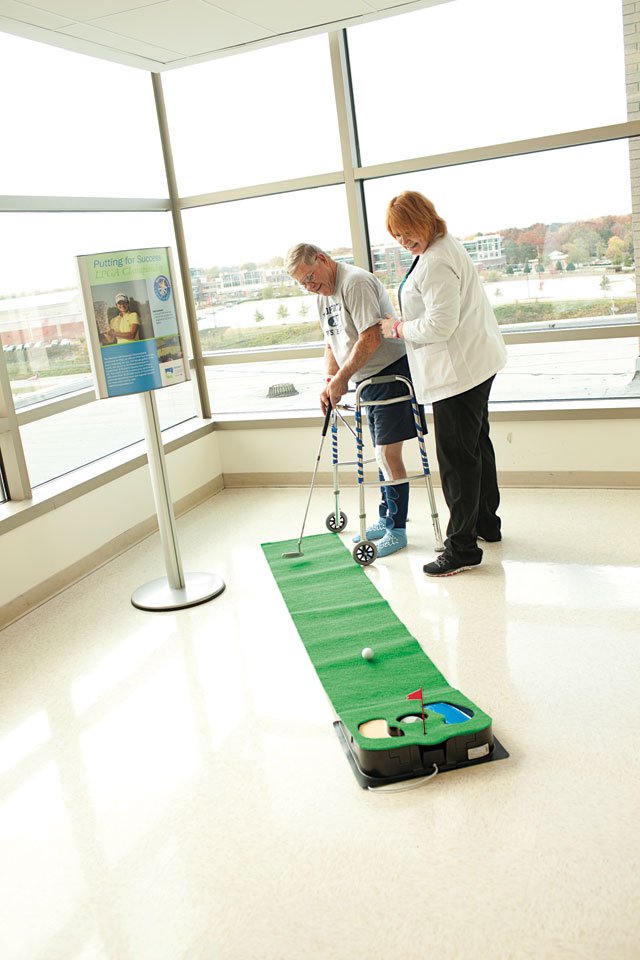As the Baby Boomer generation ages, orthopedic surgeons have seen an influx of joint-replacement patients.
In response, Mercy Medical Center created the Joint Replace- meant Center, a 12-room facility with a staff dedicated to the education and care of patients undergoing a partial or total joint replacement.
Registered nurse and program coordinator Karen Tanner said the advantage of having a center specially for joint patients is the contiunity of care.
“Our nurses and doctors see joint replacements every day, so we have that expertise,” she said.
The center’s standardized approach helps maximize healing time and get the patient home as quickly as possible. Patients then receive home health nursing and physical therapy for about two weeks before transitioning to out- patient physical therapy.
Tanner eases patients’ fears by conducting a class the week be- fore surgery for patients and their “coaches.” The coach can remain with them throughout their hospital stay, as the private rooms include sleeper sofas, and meals are provided if the coach stays around the clock and is actively involved in the patient’s care.
Because the patients get to know each other during the class, they tend to interact during the few days they are at the center.
“They become like a family and encourage and support one an- other,” Tanner said.
One-on-one therapy begins the day of surgery, followed by group therapy the next day. In the group therapy room, a board al- lows patients to track their progress.
To make group therapy fun, patients play golf, practice stepping up and down on a curb and throw a baseball.
“It’s much more fun to ask a patient to try to hit a golf ball or throw a strike than to try to balance without holding onto a walker for 30 seconds,” Tanner said.
In addition to group therapy, another way the center differs from a typical hospital setting is that patients are treated as “well” people — they wear their own clothes and are expected to participate in therapy.
Joint replacements are needed when osteoarthritis has progressed to the point that no cartilage is left in the joint. Tanner said exercise and weight control are the best way to manage osteoarthirties, and that repeat injuries and family history play a role.
Symptoms of osteoarthritis in- clued joints that are sore and ache, especially after periods of activity; pain after overuse or when joints are inactive for long periods of time; and swelling.

